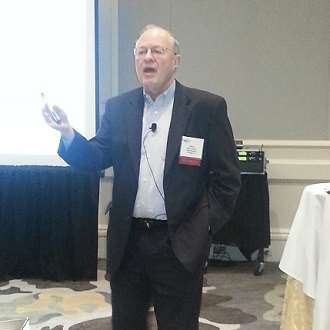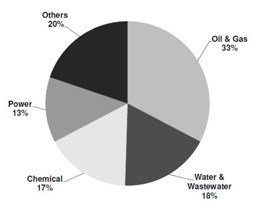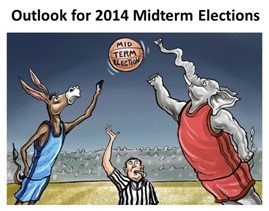VMA Forum: The Challenges of Leadership
Cyber security, trends in distribution and how to become a better leader were among the topics presented at the 32nd Annual Valve Industry Leadership Forum, which took place in Atlanta on Jan. 16 and 17.
#basics #VMAnews
A Rough Day in the Life of a Leader
While many people strive long and hard to get a position with a “corner office,” along with the perks of a leadership position come challenges that ensure leaders earn their salaries. In an engaging half-day workshop, leadership guru Sam Deep gave forum participants an opportunity to consider eight specific challenges that an executive might encounter during the course of just one day.
Deep asked members to pair up to consider the various challenges and to come up with suggestions as to how they would deal with each situation. Scenarios ranged from the best way to handle insubordination by an employee to figuring out how to get your team on board when your boss asks you to do something to which you know your team will object.
After the pairs had an opportunity to discuss their own ideas, each shared their responses so that everyone could benefit from the different points of view. Deep’s engaging and humorous presentation style helped convey his message on how to become a better leader, something that he said "everyone in this room is capable of."
The Wall Street Perspective
Oil and Gas: This market accounts for $600B of capital spending globally, and, Graham predicted, will see slower growth going forward as the current economic cycle progresses. “We do not expect another super cycle,” he said, “but possibly an elongated cycle.”
Changing demographics and the rise of the middle class in BRICs (Brazil, Russia, India and China), more complex recovery methods needed in places such as the oil sands and the sub-salt in Brazil, new shale discoveries and specialized markets such as floating LNG and re-gasification and liquefaction of natural gas all will contribute to the expected 4% to 5% growth in this market.
Water & Wastewater: Globally this market is currently $500B, but by 2035 Graham expects it to be $800 billion to $1 trillion. In the U.S., the EPA’s “2013 Drinking Water Infrastructure Needs Survey and Assessment” report indicates the country needs approximately $384 billion invested in its drinking water infrastructure through 2030. About $250 billion of the investment will be geared toward replacement or refurbishment of aging water distribution and transmission lines. Despite this huge increase in need, spending is not expected to rise significantly in the U.S. until the second half of 2014, and spending in Europe will remain weak. Growth in BRIC countries will be two to three times higher than domestic.
In a rather chilling forecast, Graham cited statistics indicating that demand for water could outstrip supply by 40% in 20 years, and that 37% of the global population will face absolute water stress by 2020.
Chemical: Long-term drivers of growth in this area include the fact that production is moving closer to feedstock, especially in developing regions. Also, the chemical majors are signaling significant investment in U.S. ethylene-based low-cost feedstock available from gas shale and many of the new projects will be located with or near refineries. While European activity in this market is flat and is anticipated to continue its decline in the short term, Graham projected a mid- to single-digit increase in U.S. capital spending this year.
Power: Demand for urbanization, industrial, process and structure uses are among the long-term drivers of the $230 billion global capital spend projected for power. And, while the IAEA expects slower growth in the nuclear sector post-Fukushima, several countries are preceding with nuclear development plans, so this will continue in the energy mix. Slower global GDP reduced electricity consumption, which affected new build spending, but the improving economy in most developed markets and the expansion of service in developing nations is expected to contribute to a very modest increase in spending through 2014.
A Polarized Political Climate
While these economic signs are positive, the socio-economic trends make for ongoing American political uncertainty. Dr. Abramowtiz cites changes in media structure and campaign finance laws that reinforce partisan polarization along with globalization and growing economic inequality as just two of the factors that create challenges for both political parties.
The Evolving State of Distribution
For example, distributors were historically sources of information about products. But with the explosion of Web technology, it is easier for customers to learn, buy and get product support directly from the manufacturer. Bassill said, “The information value that the distributor used to provide has diminished or is gone. All the information on the internet means that the customers don’t need distributors to train them.”
That leaves distributors with a much different role, with services becoming increasingly important to their company’s growth. “It’s not about your product. It’s about the customer’s business—what he needs,” said Bassill. “Distributor relationships with customers increase as levels of service increase. The more important a distributor is to the customer, the more impact the distributor can have on his suppliers.”
There are so many changes in the distribution model going forward, this topic will be covered in much greater depth in an upcoming Web feature and a column in VALVE Magazine.
The Frightening Rise of Cyber Attacks
"The industry is malware focused," he said, but "you need to be adversary centric. Not enough people are concerned about this. Recognize that this is one of the most significant risks your company faces."
Henry noted that there are dozens of countries that have electronic espionage programs in place, looking to steal information from competitors. This translates to hundreds of billions of dollars in intellectual property being stolen and warned companies to be proactive in their approach to this threat.
He offered several recommendations including what should seem very obvious… Accept it is one of the most significant risks your organization faces! “As a leader, you must consider it important, because if you don’t, then your staff won’t think it is important. The response must be organization-wide,” Henry advised. “Have a very candid conversation with everyone to be sure they understand how important this is.”
Watch VALVE Magazine.com over the next several weeks for further information and tips on how to deal with the threat of cyber attacks.
Kate Kunkel is senior editor and Judy Tibbs is editor in chief of VALVE Magazine.
RELATED CONTENT
-
Crane ChemPharma and Energy Announces New Saunders Valves Facility
The 100,000-sq-ft facility is planned to open in the fall of 2022.
-
Editor's Product Picks
Neles introduces valve-sizing and selection software for all intelligent automated process valves.
-
An Interview with VMA's New Board Chairman
At VMA’s 83rd Annual Meeting, Ron Warren, President and COO of Bray International Inc., was elected the board chairman of VMA for the next year.














 Unloading large gate valve.jpg;maxWidth=214)